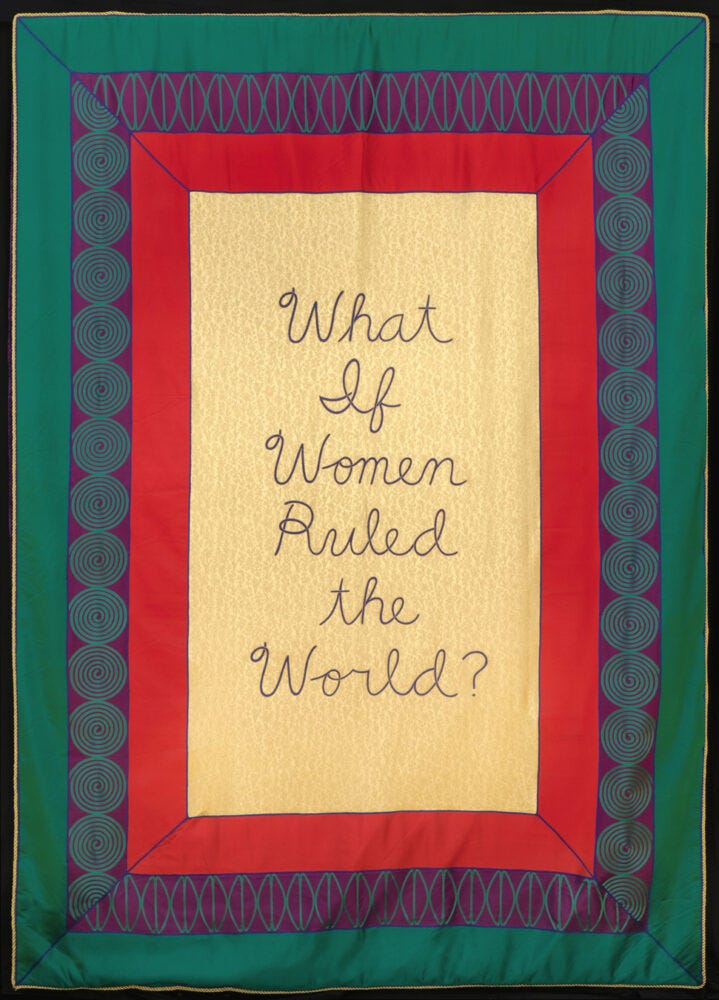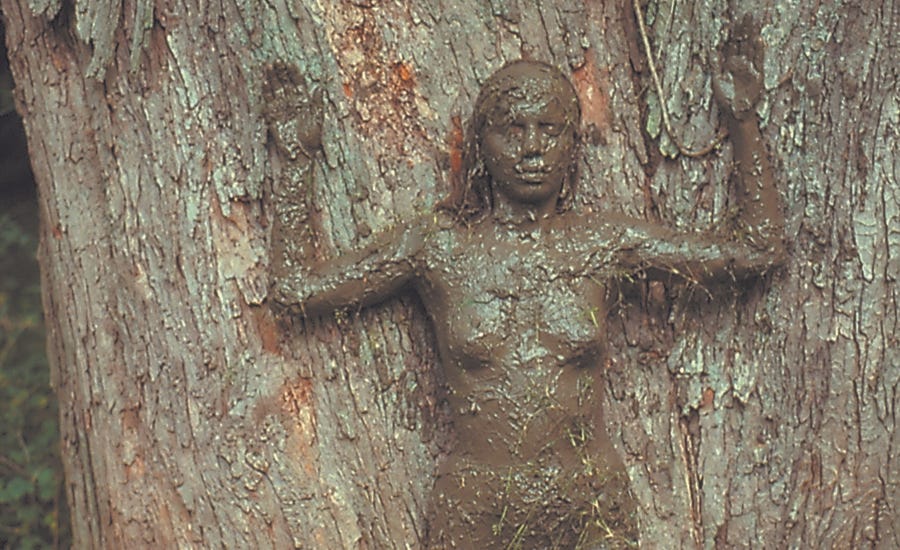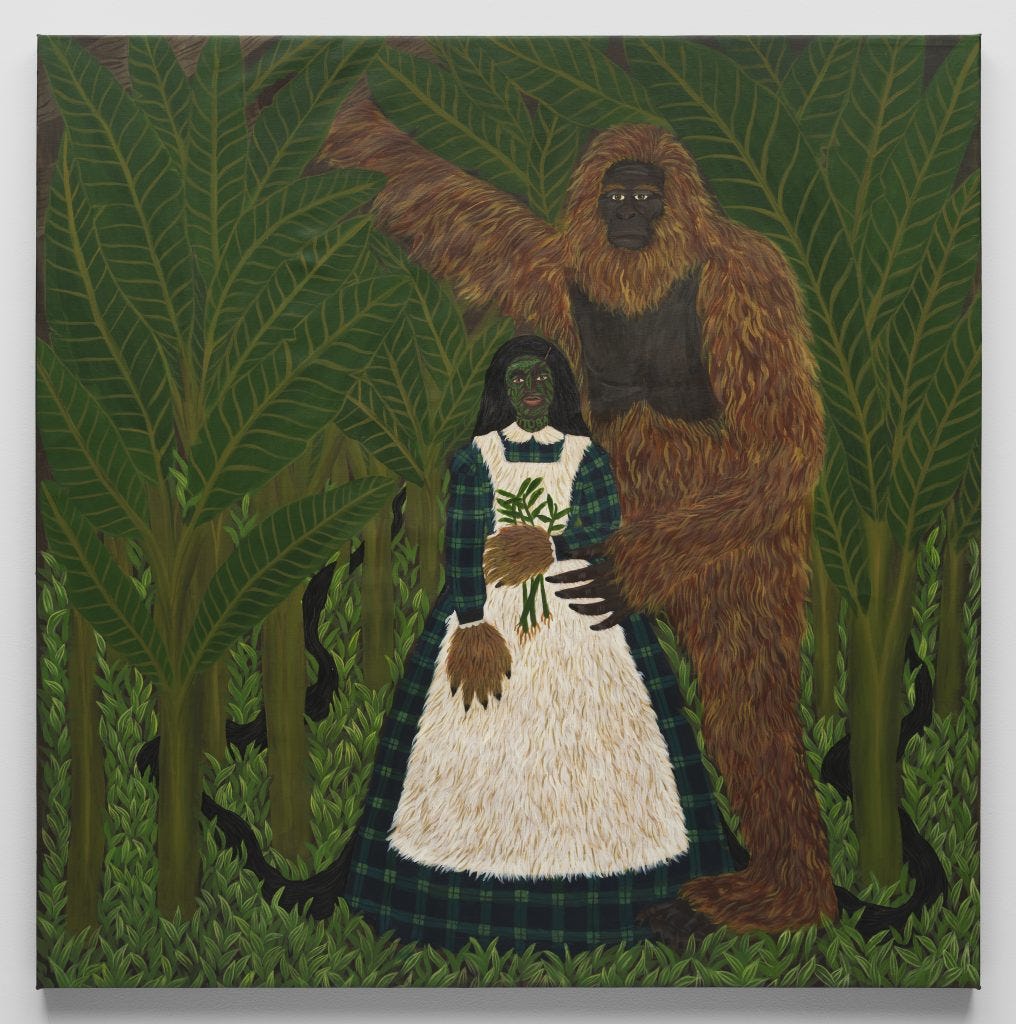“Rage can eat you alive or rage can fuel creativity”
Latinx women artists as icons of resistance and cultural resilience.
Vessel of Genealogies by Fireli Baez, 2016
Hello dear reader,
It has been a while, for those of us in the Western hemisphere we are deep into winter: shorter, colder days in a very dark world. In her recent Substack letter Elizabeth Gilbert talks about reversing “the damage that was done to our hearts and minds by a merciless and perfectionist culture — a culture that teaches us daily that we are flawed, sinful, worthless, broken, shameful, and only valuable for what we can contribute to our often dysfunctional family systems and to the ravenous machine of capitalism" WOW! In my opinion, visual artists, specifically women, create spaces where some of these oppressive systems meant to keep us small and lost come to the surface and start unravelling, so today I want to share three visionaries with you.
Virginia Woolf (test plate for “The Dinner Party”) by Judy Chicago1978
The aforementioned quote “rage can eat you alive or rage can fuel creativity,” comes from a recent interview of the feminist icon, artist Judy Chicago, where she addresses the male-centric problem of the “mainstream art world [which] is still attempting – on an institutional level, specifically, The Museum of Modern Art, or what I call ‘The Museum of Men’s Art’ – to maintain the patriarchal paradigm that has been confused with universal art history.” Have you noticed that when you go to a museum there are mainly Western male artists? In fact the actual, pathetic split is 87% male and 13% female identifying. This gender bias in the arts was something that deeply bothered me as a student of Art History and later as a museum professional and educator.
It has been over fifty years since Linda Nochlin published her pivotal article “Why Have There Been No Great Women Artists?” which launched a wave of feminist art and scholarship, yet, as those figures illustrate, the battle still rages on. I remember reading the essay as an undergrad and thinking, “ah, now I get it,” and yet in grad school most classes on “Modern Art” where in reality “what white dudes in Paris, London and NYC were painting from the late nineteenth century to the present day.” In many very recent “top ten,” “best of 2023” lists I still saw scores of dead white artists like Manet, Munch, Degas and Matisse (this elder Frenchman even made TOP show of the year in The Art Newspaper’s recent list.) Can’t the art world press give shows by the mostly-male “masters” of Modern art a rest? There is SOOOOOOO much better, more relevant work being produced today. How is Monet even relevant TODAY except as reminders of Judy Chicago’s point- Art (capital A) has notoriously been told as a tale of white European men… I like the question Judy Chicago asks in this piece: What if Women Ruled the World?
“I wanted my images to have power, to be magic. I decided I had to go to the source of life, to mother earth.” - Ana Mendieta
Cuban- born visual artist Ana Mendieta’s (1948-1985) work is as prescient and relevant today as it was in the 70’s and 80’s. She is an icon of courage and defiance, a role model for anyone who fights oppression, colonialism or exploitation. Her art explores themes of exile, displacement, home, renewal, the environment, a women’s struggle to find her voice and the universal struggle of belonging. Ana Mendieta’s art has always haunted me. Some of her story mirrors my own life as an exiled Latin American, yet her art speaks of the universal struggle to be at home in the world. Mendieta believed that the earth was a goddess, and through her art she hoped to “become one with the earth.” Her land-based performance art incorporated ritual as a vehicle to explore her Cuban heritage. She “used her body as a way to explore ideas of identity and displacement and its connection to the earth."
Separated from her family and sent to Miami from Havana at age 12 via the “Peter Pan Operation”, she was later relocated to Iowa where her perception of race and class were altered as a result of navigating foster homes, orphanages, and juvenile detention centers. It would be five years before she saw her family.
Her life and work explores themes of exile, displacement, home, tragedy, renewal, and the universal struggle of women creatives. The brilliance of her mysterious and defiant work, and its claims for identity and legitimacy were tragically cut short by her death at thirty seven (she fell 34 floors from the window of her NYC apartments at the height of her career in 1985.)
Another artist who explores a world in between two cultures is Dominican-born, NYC based Fireli Baez who is one of my favorite contemporary artists. She was raised in Dajabón, Dominican Republic near the northeastern border with Haiti. She incorporates mythological beings from Caribbean folklore, archival maps, and often portrays women who stare at the viewer and invites us into a deeper, more decolonial exploration of home, fluid identity and history. Her use of color is sublime and I cannot wait to see where her career takes her, if you do not know her work, listen to the artists describe her fascinating process here!
“Map of the British Empire in America” 2021
A mythological creature which appears often in Baez’s work, see the image below, is the ciguapa, “a creature from Dominican folklore that wanders with its feet turned backward, making it hard to locate. The entities appear to be dancing toward each other, with palm fronds atop their torsos, and some of their feet have grown stilettos. Báez employs the ciguapa as an image of of freedom in relation to landscape, gender and race…A creature that cannot be controlled or contained — a true artist of survival."
How to slip out of your body quietly, 2018
*For more in the Ciguapa see the recording of this NYU Latinx Project symposium here.
She taught me to listen to the wind, 2023
Finally here is some work by Kelly Sinnapah Mary, an artist I recently discovered who also incorporates the natural world seamlessly into her work. This recent Artnet piece exploration of her ancestral roots and relationship with flora and fauna.”
“KELLY SINNAPAH MARY lives and works in Guadeloupe, an overseas territory of France. Originating in the South Indian state of Tamil Nadu, her ancestors were relocated with force, deceit, and/or some degree of choice to the Caribbean archipelago as indentured workers following the abolition of slavery in the nineteenth century…The artist interweaves references to rituals, as well as encounters between native and invasive creatures from land and sea."
I wish I could paint like these women, but alas, my skill set is more on the Art History research/writing spectrum at the moment so I will continue to find artists that inspire me and share them with you here. The extractive economic system of late-stage capitalism where we find ourselves aims to separate us from nature. It views the natural world as another commodity, one separate from us. In contracts, Non Western cosmologies do the opposite, they tell of a world with no divisions. In the Andes where I come from people refer to, and revere, mountains as family: taitas or uncles, the Inca referred to the moon as a Goddess Mama Quilla.
Doesn’t that seem so much more sane? Imagine where we would be today if we really started exploring these principals, every culture has a rich pre-Industrial tie to the Earth, much like the art I spoke about today. I prefer the world through these women’s eyes, and the fact that they create visual art to help us imagine an alternative reality is a true gift that I hope you grow to love as much as I do.
Thank you to my paid subscribers, your generosity allows me to research. Please consider becoming one if it is accessible to you., or perhaps gift one to a friend.
Gracias and carry on!
xo
Vero















I LOVED this!!! Thank you so much. I wrote about a similar topic, about the figure of the muse and how that relates to creativity. All these latinx artists see themselves as the source of their creativity, they are their own muse.
Great newsletter! I very much enjoy (is that the right word? it feels more like being in awe) the art and the writing as well.